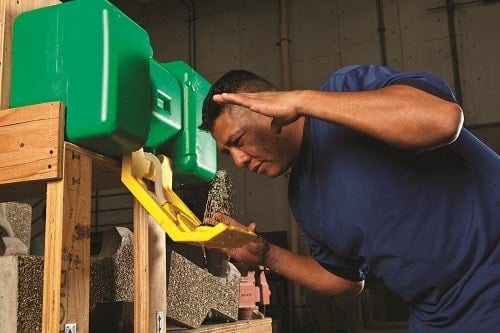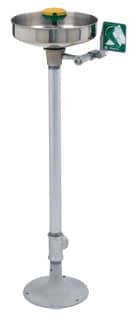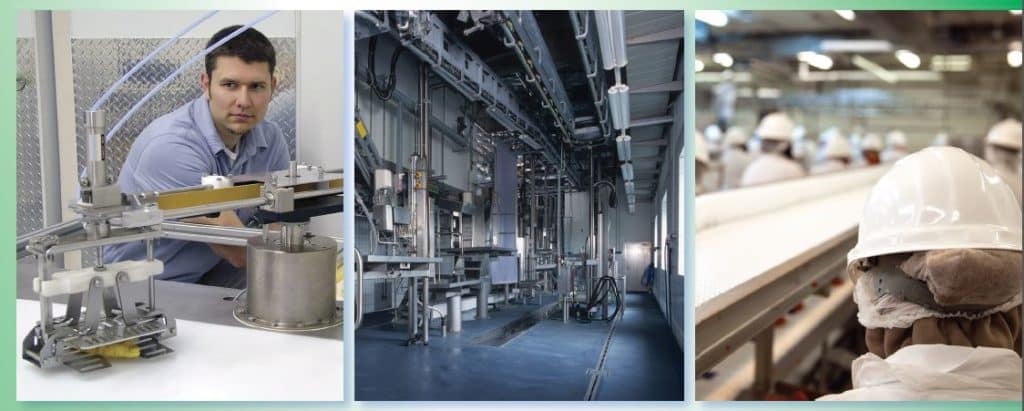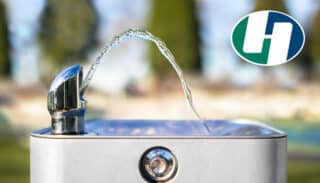From the oil industry to mining, agriculture to research, any working environment that puts employees in close proximity to occupational hazards such as potentially harmful chemicals must make workplace safety a priority. The food processing, meat packing, and poultry processing industries are no exception.
INDUSTRY RISKS
In addition to physical hazards like high noise levels, cuts, and musculoskeletal disorders, exposure to substances like ammonia, carbon dioxide and carbon monoxide can pose another risk to employees in the meat packing and food processing industries.
In March of 2016, OSHA fined a Texas-based poultry plant for allegedly allowing the release of anhydrous ammonia, a gas commonly used in significant quantities as a refrigerant across a variety of food processing facilities. This colorless gas, classified as hazardous by the OSHA Hazard Communication Standard, is known to be highly irritating, with a very sharp, suffocating odor. Immediate health effects of exposure to anhydrous ammonia include:
• Burning of the eyes, nose and throat
• Coughing and choking
• Swelling of the throat and/or chemical burns to the lungs
Prolonged exposure can lead to eye damage, severe burns, and even death.
Another OSHA violation occurred in December 2012 when a food manufacturing facility did not provide an emergency shower or eyewash in the immediate vicinity of a forklift battery charging station.
MEETING THE STANDARD
Immediate first aid for exposure to anhydrous ammonia or battery acid includes providing fresh air and immediate flushing with water for no fewer than 15 minutes. Safety data sheets for many chemicals require that eyewash stations and safety showers are close to the workstation location as a protective measure. And OSHA 29 CFR 19010.151(c) states “where employees were exposed to injurious corrosive materials, suitable facilities for quick drenching or flushing of the eyes and body.” This kind of emergency response access necessitates appropriate safety equipment and proper employee training – hallmarks of industry guidelines set forth by the American National Standards Institute (ANSI).
ANSI Z358.1 is a comprehensive guideline that outlines specific parameters for the appropriate design, installation, performance, certification, use and maintenance of emergency eyewash and shower equipment across a range of industries. Failure to comply with all aspects of ANSI Z358.1 not only puts employees at risk, it opens a facility to potential liabilities and penalties. When working with chemicals, such as anhydrous ammonia, taking preventative measures is your safest bet. By supplying the appropriate emergency eyewash and shower equipment, you’ll be able to prevent further injury as well as reduce the risk of OSHA and ANSI non-compliance.
Download this white paper to share or save>>
Portable vs. Plumbed Eyewash: Which do I need?
HOW DO I KNOW IF I NEED A PORTABLE OR PLUMBED EMERGENCY SHOWER/EYEWASH PRODUCT?
The most costly injury of the more than 5 million unintentional work related injuries in the US involves the head, averaging $82,382 per claim. In any environment, occupational safety should be taken very seriously and appropriate emergency response is a crucial component to the overall safety of your employees and your company.
The Occupational Safety & Health Administration (OSHA), 29 CFR 1910.151, requires that “Where the eyes or body of any person may be exposed to injurious corrosive materials, suitable facilities for quick drenching or flushing of the eyes and body shall be provided within the work area for immediate emergency use.” OSHA turns to The American National Standards Institute (ANSI) Z358.1-2014 Standard for specifics on selection, installation, operation and maintenance requirements.
Proper emergency equipment selection is a function of knowing your risks, the characteristics of the materials you work with, and logical consideration of the variety of products and design configurations available.
Once you’ve determined that an emergency station is needed, you need to define whether a portable or plumbed station is most appropriate. But first, you must be aware of the difference. A portable eyewash is a self-contained ANSI-compliant emergency response product that is needed for locations without access to water and can be moved at a moment’s notice to meet the rapidly evolving needs of a chemical, manufacturing, or construction environment. There are various types of portable eyewashes including gravity-fed, air-pressurized, and personal squeeze bottles (reference ANSI Z358.1 Supplemental Equipment/Personal Wash Units (Section 8.1)). Portable stations can provide added flexibility that is a benefit in to
plumbed station is most appropriate. But first, you must be aware of the difference. A portable eyewash is a self-contained ANSI-compliant emergency response product that is needed for locations without access to water and can be moved at a moment’s notice to meet the rapidly evolving needs of a chemical, manufacturing, or construction environment. There are various types of portable eyewashes including gravity-fed, air-pressurized, and personal squeeze bottles (reference ANSI Z358.1 Supplemental Equipment/Personal Wash Units (Section 8.1)). Portable stations can provide added flexibility that is a benefit in to day’s dynamic work settings. A plumbed unit is just as it sounds; a permanent emergency response solution that is in a fixed location connected to a continuous source of potable water with sufficient flow and pressure for ANSI compliance and victim comfort.
day’s dynamic work settings. A plumbed unit is just as it sounds; a permanent emergency response solution that is in a fixed location connected to a continuous source of potable water with sufficient flow and pressure for ANSI compliance and victim comfort.
ANSI Z358.1 requires that all emergency stations, portable or plumbed, must provide sufficient flow (flow rate depends on product type i.e. eyewash vs. eye/face wash vs. shower) for a minimum of 15 minutes. They are also required to be located within 10 seconds of the potential hazard. Supplemental eyewashes, such as personal squeeze bottles, are a useful solution while a victim is en route to primary equipment.
In addition to water source, ask yourself these questions when determining if a portable or plumbed unit is needed:
- Does the potential hazard stay in the same location within the facility or is it mobile? If it is static work station, a plumbed unit is the recommended product choice and must be installed within 10 seconds of the hazard. If the hazard is mobile such as a construction site, a portable product is recommended and is to be placed within 10 seconds of the hazard.
- Does the location need tempered water (60-100°F/16-38°C)? If the emergency fixture will be located in areas where the internal water temperature could drop below 60°F (16°C) or rise above 100°F (38°C), the water temperature will need to be regulated. Most portable units do not provide an option for tempered water, therefore a plumbed unit along with a tempering solution is the recommendation. Although, a few manufacturers do offer a tempered portable station.
Maintenance of portable and plumbed units differ. As portable units hold stagnant water, they are required to be drained and refilled with potable water on a more frequent basis. Most eyewash manufacturers offer a sterile preservative that keeps the water for an average of 3 months. On a weekly basis, ANSI requires a visual inspection should take place to ensure unit is full and clean. Regarding plumbed units, there is an ANSI-mandated weekly activation requirement to verify proper operation and to flush buildup that may have formed due to stagnant water in the piping and unit.
It’s impossible to predict when an injury will harm a workers’ eyes, face or body, but it is possible to take proactive preventative measures by supplying the appropriate emergency response equipment for maximum victim comfort and response.
To download or print this white paper, click here.
How Does the Safe Water Drinking Act Affect Emergency Eyewashes and Showers?
The question comes up often… “How does the Safe Water Drinking Act (SWDA) Section 1417, which prohibits the use of certain items that are not lead free, affect emergency eyewashes and showers?”
Since 1996, the Act has made it unlawful for anyone to introduce into commerce items that are not lead free.
The 2011 Reduction of Lead in Drinking Water Act revised Section 1417, redefining the maximum lead content of plumbing products such as pipes, pipe fittings and plumbing fixtures from 8.0% to an average of .25%.
SWDA and Emergency Equipment Exemption
- Emergency eyewash devices or emergency drench showers are not subject to the prohibitions in Section 1417 of the Safe Drinking Water Act whether they are separate devices or single units that combine an emergency drench shower and emergency eyewash devices, either with or without dedicated piping.
- An eyewash device and its dedicated piping would be exempt under Section 1417(a)(4)(A) because it is used exclusively for services that are considered nonpotable for purposes of Section 1417 of SDWA – eye washing.
It is plainly not the purpose of the devices and therefore the mere possibility of misuse would not subject them to the new definition of lead free in Section 1417.
Read and download the full white paper>>





